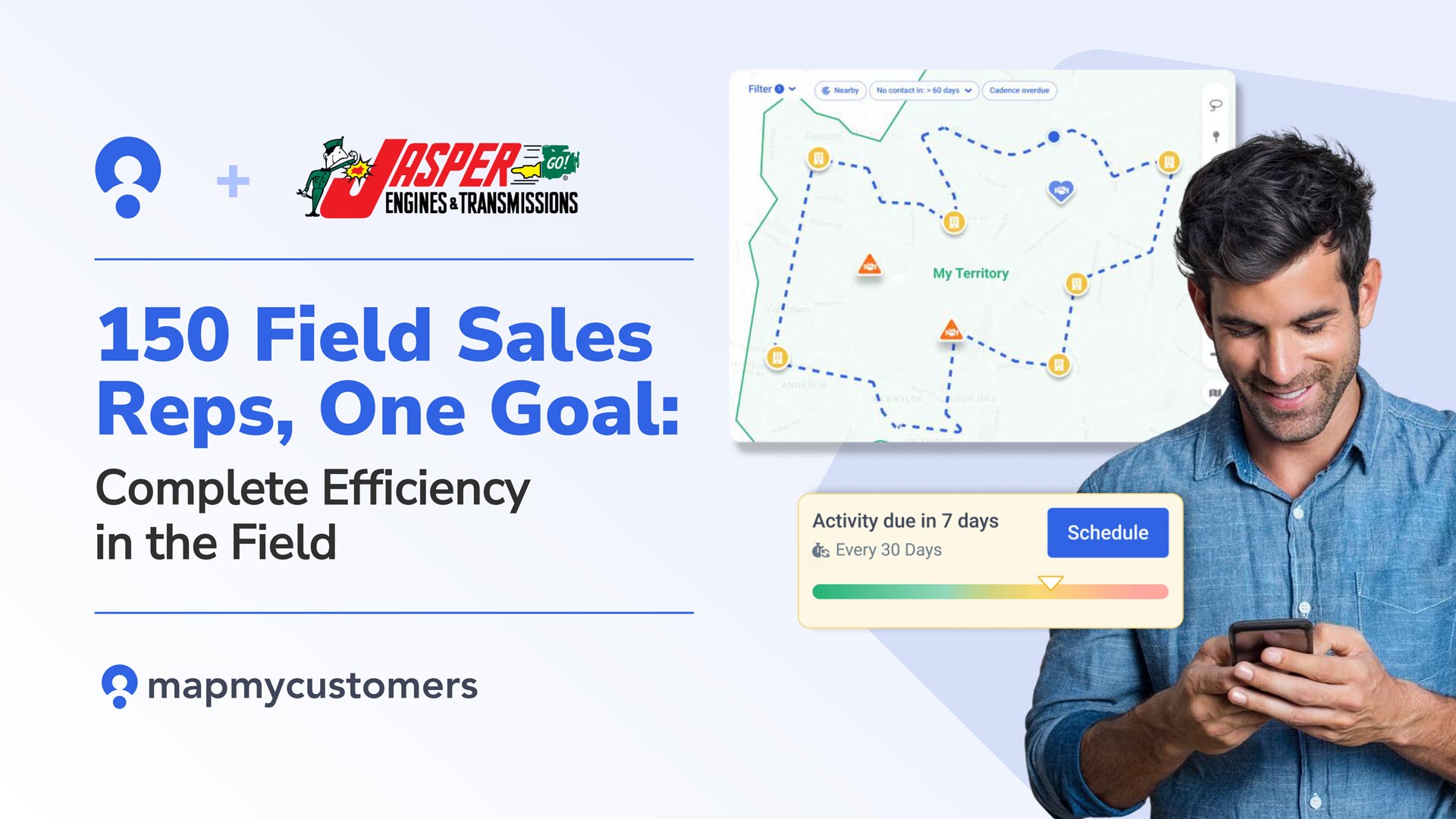It’s a new era, and outside sales teams face a wide array of challenges ranging from the prospecting stage to closing.
Even after outside sales challenges like working on a team, maintaining productivity, or finding the right clients, sales teams must to be able to effectively negotiate for business.
They also must understand the intrinsic motivations of the buyers’ decisions.
The problem is, instead of addressing the root of the problem, sometimes sales managers only have the time or resources to fix the symptoms.
Fortunately, with a better understanding of these challenges, sales managers can make the necessary adjustments and lead their team to success.
How to Overcome the Top 7 Outside Sales Challenges
The job of a sales manager can be difficult and it takes a high level of patience to overcome collaboration and productivity.
A 2017 survey report by Richardson Sales Training highlights this challenging environment driven by ongoing shifts in sales.
The survey compiled the top outside sales challenges and we will tell you how to best address them — so you can get back to crushing goals and focusing your energy where it’s needed.
1. Find The Person With The Problem
When talking about the biggest outside sales challenges, it’s impossible to overlook prospecting. While time-consuming, and oftentimes mind-numbing, it’s crucial for keeping the sales funnel full.
To save valuable time and energy, you should come up with a targeted prospecting strategy. With a plan in place, your company can dedicate your time more efficiently to growing your portfolio of clients and closing more deals.
Sales and marketing can then use this blueprint to better target prospects and confront the issues they face with increased visibility and transparency.
Source: Tony Vidler
The buzzword “smarketing” refers to the integration of efforts and goals of the sales and marketing team. It’s become more popular over the years as companies have realized how imperative the cooperation of these two teams is for overall success.
Sales and marketing teams within a company should have alignment on lead standards. Ideally, these goals should be defined cooperatively between the two departments.
When a marketing team has a firm understanding of what should be scored as a sales qualified lead (SQL) they can better focus their marketing efforts on targeting the right people.
“If you’re not qualifying your leads properly, you’ll waste a lot of time following up, and attempt to sell to prospects that aren’t a good fit for your company.”
By Close.io
Because getting prospects to agree to a meeting is becoming more and more challenging, actually setting appointments can be another huge challenge in the prospecting process.
The best way to score an appointment with a potential customer is to perform your due diligence, thoroughly research, and understand the challenges they face in their industry.
Creating relevant messaging and approaching them in their own language is the best way to show them how much your business means to them….
And to get that initial appointment.
2. Optimizing Travel Time
While on the road, outside sales reps do a lot more than sell. They spend their days driving from appointment to appointment, recording meeting notes, and updating client information. They also need to set reminders to follow-up after a certain number of days and email any information to an opportunity.
These outside sales challenges adds up to a ton of money, and having a low cost of sales is crucial to ROI.
“Having a low cost of sales means spending time with the prospects most likely to buy.”
By Salesloft
Today, there are a number of tools available to help reps streamline their administrative activities, book appointments on your reps’ calendars, and help streamline proposal creation.
While these tools can be helpful for many sales rep activities, they don’t address the key challenges felt by outside sales reps. Prospects may cancel an appointment last-minute. Meetings may move quicker than expected, leaving them with some spare time at their disposal.
Use a route planning tool that allows sales reps to map out the optimal route for their day. They’ll be able to create routes around clusters of leads or opportunities, or around their entire territory.
Route planning can also accommodate last minute changes, such as a canceled appointment or an unexpected lead. Reps can simply add or remove a location and the tools will handle the rest.
With a route optimization, you can free up your reps’ time so they can focus on what’s important: their clients.
3. The Art of Negotiation
While it might be tempting to wheel and deal, the key to closing deals trust and authenticity. To be build rapport and a successful negotiator, you have to come prepared.
“The single most important part of negotiation is preparation. The groundwork starts with your ability to be specific and transparent about what you want and why someone should work with you”
Establishing credibility and developing a long-term productive relationship with a buyer is vital for fostering a positive platform for negotiation. Fostering good relationships built on trust enables to negotiate higher prices.
Clients often go into negotiations expecting to get as much as they can at the lowest cost possible. Coming prepared, establishing credibility, and knowing what you want going in is crucial here for getting what you want out of the deal.
Like prospecting, it’s helpful to create an outlined negotiation process. Instead of viewing negotiations as a last step in the sales cycle, your team should understand it’s a part of the overall strategic process.
4. Get Productive, Not Just Busy
If you’re like most outside sales teams, you’re probably wasting a lot of time on administrative, non-selling activities. In fact, a study found that only 41% percent of salespeople spent their time actually selling.
And if you consider this chart, they might actually be right.
Source: SellingPower
This is where smarketing comes in as well. It’s all about finding the right marketing assets to support your selling effort because it’s time-consuming to search for the right assets to understand a customer’s business.
With a large territory, it can be difficult to balance your time between prospects and clients. To keep productivity high, you should use technology that allows you to see what stage prospects are in your sales funnel, or prospect mapping to determine where the team’s time is best spent.
5. Avoid Stakeholder Barriers
As much as we try, it’s difficult to understand how customers come to the decisions they do. Even with data analysis, interviews, and watching behaviors, you might not get an entirely clear understanding of how they think.
Your outside sales team should have a clear understanding of the buyer’s journey, common questions, and objections prospects have. But to encourage decision making, you can try to highlight the loss or risks associated with not buying in and get them out of their comfort zones.
Source: Alecox Blog
You can further encourage prospects by comparing their options. Focus on the opportunities, wins, and potential profits your buyer will gain.
Help your potential client better visualize their options by engaging with all stakeholders, presenting them with personalized insights, and credible research.
6. It’s A Team Effort
Salespeople are often quite independent, and thus sometimes struggle in an environment where they are required to work as a team to accomplish sales. Because everyone has different motivations and methods, it can be a outside sales challenge to balance the various personalities that can be found on a sales team.
Provide your team with all of the resources they need, like a detailed sales process, sales transparency, data visualization, and best practices. This will not only encourage success, but will increase team morale as well.
7. Close The Deal
Today, buyers have an endless amount of information at their fingertips, but this overwhelming amount of material doesn’t always make it easier for a buyer to make a purchasing decision.
Sellers can add value to a customer’s buying cycle by addressing their unique situation and identifying the right solutions so they can make an informed decision that drives the results they desire.
With the right sales strategy and tools, organizations can to improve overall performance and give outside sales reps the confidence to make stronger relationships with prospects and existing clients.
“…Correctly managing your sales territory will ultimately help you close more deals by accurately focusing your time and effort according to each prospect or customer.”
The current selling environment offers salespeople the opportunity to understand and adapt to the evolution of the buyer’s table…because after all only the fittest salespeople will survive.





